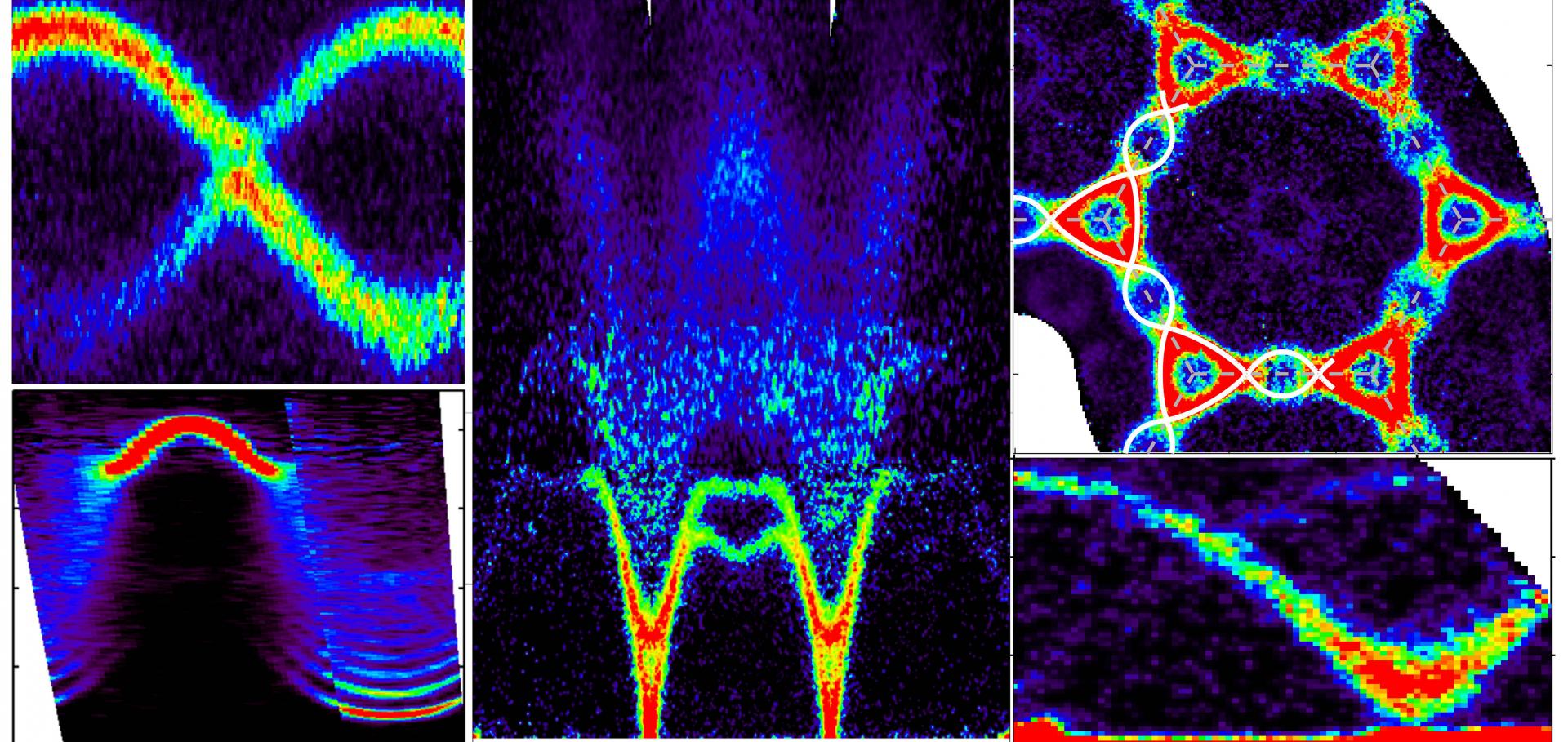Magnetic phase transitions in the two-dimensional frustrated quantum antiferromagnet Cs2CuCl4
(2006)
Magnetic phase transitions in the two-dimensional frustrated quantum antiferromagnet Cs2CuCl4
ArXiv cond-mat/0601272 (2006)
Abstract:
We report magnetization and specific heat measurements in the 2D frustrated spin-1/2 Heisenberg antiferromagnet Cs2CuCl4 at temperatures down to 0.05 K and high magnetic fields up to 11.5 T applied along a, b and c-axes. The low-field susceptibility chi (T) M/B shows a broad maximum around 2.8 K characteristic of short-range antiferromagnetic correlations and the overall temperature dependence is well described by high temperature series expansion calculations for the partially frustrated triangular lattice with J=4.46 K and J'/J=1/3. At much lower temperatures (< 0.4 K) and in in-plane field (along b and c-axes) several new intermediate-field ordered phases are observed in-between the low-field incommensurate spiral and the high-field saturated ferromagnetic state. The ground state energy extracted from the magnetization curve shows strong zero-point quantum fluctuations in the ground state at low and intermediate fields.Comment on "Bose-Einstein condensation of magnons in Cs2CuCl4" -: Reply
PHYSICAL REVIEW LETTERS 96:18 (2006) ARTN 189704
On the ordering of Na+ ions in NaxCoO2
AIP CONF PROC 850 (2006) 1213-1214
Abstract:
The influence of electrostatic interactions on the ordering of sodium ions in NaxCoO2 is studied theoretically through Monte-Carlo simulations. For large x small di- or tri-vacancy clusters are stable with respect to isolated Na vacancies. At commensurate fillings these small clusters order in triangular superstructures. These results agree with recent electron diffraction data at x = 1/2 and 3/4. We have performed neutron Laue diffraction experiments at higher x, which confirm the predictions of this simple model. The consequences on the properties of the electronic charges in the Co layers are discussed.Field-induced phase transitions driven by quantum fluctuation in S = 1/2 anisotropic triangular antiferromagnet Cs2 CuBr4
Progress of Theoretical Physics Supplement 159 (2005) 217-221


